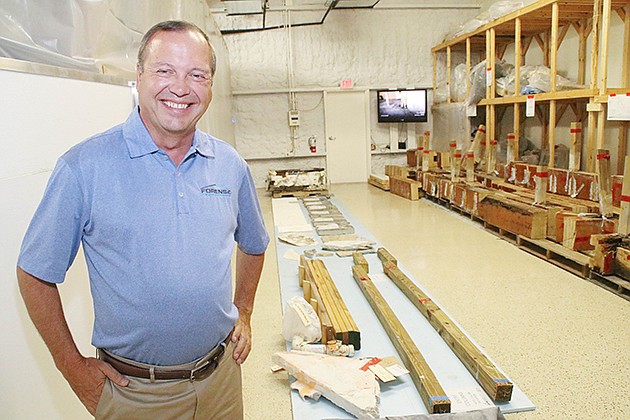- July 26, 2024
-
-
Loading

Loading

Construction gumshoe Craig Kobza's day often starts with a call from a builder who realizes he should have hired Kobza before a project began taking on water or showing signs of structural or mechanical defects.
Kobza sees the role of his Naples-based Forensic Construction Consulting as especially important in the final stages of a construction project, in which defects caused by worker error or flawed materials escape the notice of construction supervisors, engineers, architects and other professionals on the job. “That's when it's good to have someone watching on a daily basis,” says Kobza, a Michigan native who began doing custom homebuilding and commercial construction in Florida in the late 1970s.
Kobza eventually developed a side specialty in building repairs, and in 2001 created Forensic Construction Consulting as an offshoot of his high-end commercial and residential construction firm, the Aerial Cos. He prefers to be on the job before the project's architects and engineers do the provision inspection, just ahead of bringing the building online. Not to catch someone doing something wrong, he says, but “to help them.”
The backup the firm provides is especially important along a Florida coastline susceptible to battering from extreme winds and rain, says Kobza, who leverages the expertise of the 60-plus construction specialists at the Aerial Cos. in ferreting out building defects and their causes. “Aerial specializes in reconstruction,” he says, so it can help resolve problems it is seeing in its own building projects.
The consulting Kobza and forensic construction specialist Gretchen Grant do is typically on behalf of building owners, developers, construction companies, attorneys and insurance companies. Kobza and Grant provide oversight services on construction of commercial buildings and facilities and diagnose problems that arise on the projects after construction. But lately they spend much of each workday on problems showing up in the construction of ultra-luxury homes.
In Forensic Construction Consulting's decade-and-a-half life, it has resolved more than $70 million worth of construction defect cases, with issues ranging from the tens of thousands to tens of millions of dollars. Officials decline to release specific revenues, only to say billings increased 35.7% in 2015 over 2014, and are up 52.5% year-over-year in the first six months of 2016.
Whether commercial or residential, much of the focus is on the “building envelope,” says Grant, referring to such elements as walls, floors, roofs and assemblies of doors and windows.
Water is a frequent culprit, and for myriad reasons, she says.
Often the problem is obvious but the cause is not, Kobza says. “Say I get called in for an emergency. It might be a hospital in Tampa, where there is an envelope condition.” Once he identifies and evaluates the condition, Kobza comes up with a repair. If humid air is coming into the building, he looks for envelope leaks.
“Maybe someone cut into a pipe or gas line and didn't seal if off,” he says. “Suddenly, you have the exterior of Florida flowing into a building.”
Whatever the fix, Kobza wants significant testing before applying it. “I design a test profile,” he says. “Then when we prove what is wrong, we work with other professionals like mechanical engineers, structural engineers, utilities specialists” to develop a plan for resolving the problems.
Another key to success in forensic construction work, Kobza says, is a willingness to bring in professionals who are smarter than you. If signs point to a problem with particulates, for instance, the firm will hire a particulate specialist to help with the sleuthing.
Often the detective work concludes that product failure is the problem. With windows, a faulty manufacturing process or a defective seal could be the cause.
Beyond product failure, it's not uncommon for the forensic work to trace the problem to an out-of-state developer or contractor's unfamiliarity with the nuances of working in a state surrounded by water and exposed to destructive rain and wind, says Kobza. A simple inability of project supervisors, engineers, architects and others involved in a project to communicate and coordinate can often be the source of a problem. “We see a disconnect,” Kobza says, “and that the communication just wasn't there.”
By Ted Carter | Contributing Writer